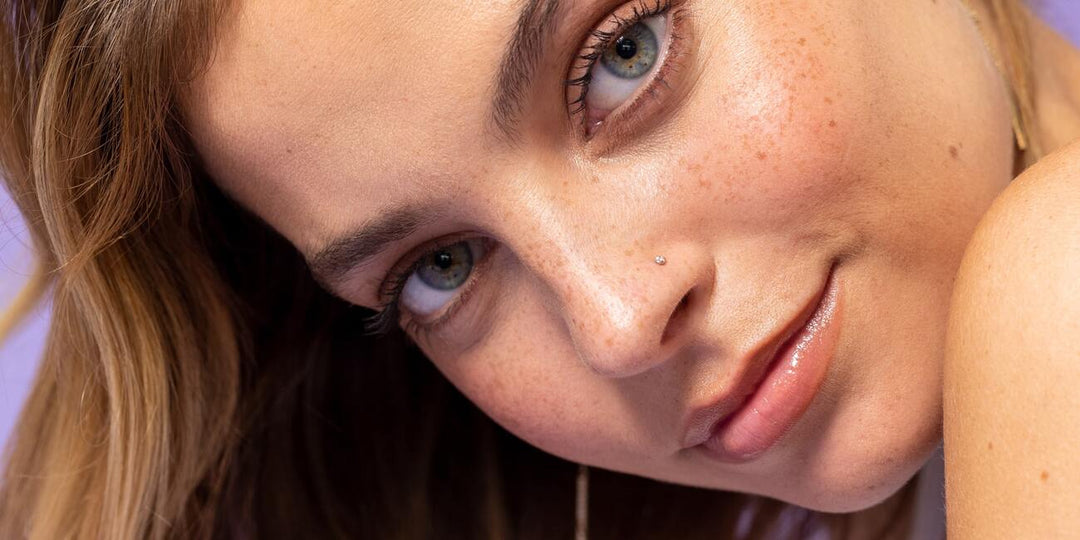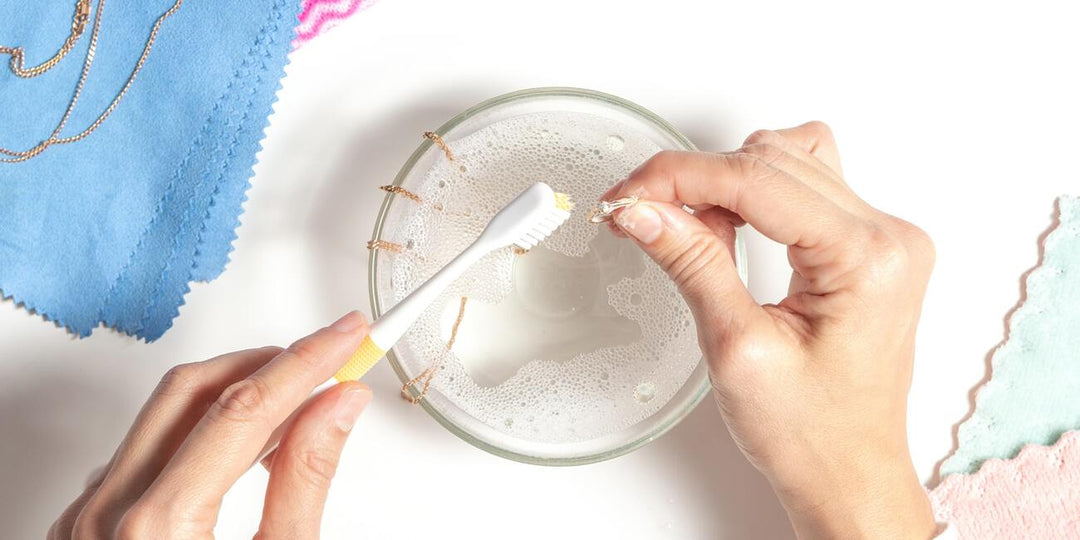Choosing The Perfect Diamond Nose Ring


At FreshTrends, we take pride in handcrafting all of our nose rings. We custom make the perfect item for your individual nose—the right size stone, a superb setting, and the perfect amount of sparkle. There are lots of options to choose from to create the ideal nose ring. It's important to understand each option to make sure you get the correct fit. Use the information below to help pick the perfect piece.
Standard Setting Types
Choosing the right setting is important. We offer two standard setting types: prong and bezel settings. We make our own settings in house to ensure they are perfect for use as nose piercing jewelry, sitting as flush to the nostril as possible and exposing the diamond to the correct amount of light to maximize the sparkle from your genuine diamond.
The martini prong setting covers as little of the diamond as possible, maximizing the sparkle in each genuine diamond. Traditional basket settings sit high on the skin and look bulky. Our custom made settings sit as flush as possible to your nostril.
We also offer alternative, fancy settings here.
Metal Color & Quality
Quality of material is very important in piercing jewelry, that is why we do not use nickel in our body jewelry. All of our body jewelry is crafted using solid 14k gold; it is not gold plated, or gold filled. A full analysis of our metals is available for review here. We laboratory test our gold stock to ensure our nose rings and all body piercing jewelry adhere to the highest standards.

14k White Gold– We use palladium as the alloy to obtain the white color instead of nickel for our white gold. Each piece is rhodium plated for a bright white finish.
14k Yellow Gold– Classic yellow gold with rich yellow tones.
14k Rose Gold– We use no plating in our rose gold. The pink color is made by adding additional copper to the gold.
950 Platinum– Nothing says quality like premium 950 platinum piercing jewelry. This bright white precious metal has a higher melting point than gold and has a clean white color.
Gemstone Size

1.5mm – Our smallest, most tiny diamond (0.015ct). This is a little subtle sparkle for your nose piercing.
1.7mm – Our dainty diamond (0.02ct), a little brighter than the 1.5mm diamond.
2.0mm – The ideal size, it offers the perfect balance between subtle and sparkly (0.03ct).
2.5mm – The perfect diamond nose ring. Dramatic and elegant, it's our bestseller and recommended size (0.06ct).
3.0mm – Some serious sparkle, for those looking for something luxurious (0.10ct)


FreshTrends Tip
Be careful not to wear fabrics that could catch your jewelry and to keep the piercing covered when sleeping to avoid a snag.
Diamond Clarity
Diamonds are measured by the four C’s – cut, clarity, color, and carat weight.
We hand select only the finest brilliant-cut VS1 diamonds* for our diamond nose rings. In other words, we carefully check each stunning diamond for optimum sparkle.
*VS1 – Very slightly included, which means that under a 10x loupe/microscope, very minor imperfections are visible.
SI1 – Slightly included, which means that under a 10x loupe/microscope, minor imperfections are visible.

Nose Ring Style Or Backing

Bone - A bone nose ring has a tiny ball at the end that holds it in place.
Straight | Fishtail | Pin - A nose pin is made for a piercer or jeweler to bend into an L-Post by a piercer to ensure the correct wearable length.
L-Post - An L-Shape nose ring has a 90 degree turn at the end forming an L-Shape to hold it in place.
Twist* - A nose twist has a hoop of metal at the end of the nose ring that holds it in place. *Note: This is our most popular and recommended backing style.
Flat Back - Flat back studs are versatile pieces that can be worn in a variety of piercings including nose piercings. The flat disc backing provides both comfort and discretion.
Gauge
The gauge refers to the thickness of the barbell that passed through your piercing. The higher the number, the thinner the gauge, a fact that causes widespread confusion to those who lack piercing savvy. A standard nose ring, when you get pierced by a professional piercer, is 18 Gauge. Many people end up using a thinner 20 Gauge.
We do not recommend using 22 Gauge for nose piercings, which is why we do not offer this size. The very thin wire makes for a weak nose ring that will be easily bent or misshapen, and your piercing will shrink in size to accommodate the thinner wire diameter, making it harder to use your other nose ring jewelry that you already own. Check out our complete body jewelry size guides and gauge conversion charts for more help.
It is always best to consult with your local piercer to establish the perfect size for your piercing before you place your order. However, we recommend 18 Gauge if you have always retained your original piercing size. 20G is recommended if you have bought jewelry that is smaller than your original piercing jewelry or find 18G jewelry tight or uncomfortable to insert. Remember, to avoid irritation it is best to sterilize your jewelry prior to use, and it is a good idea to use a tiny amount of Vaseline on the tip of the nose ring to aid in easy and friction-free insertion into your piercing.
We Are Here To Help!
Everyone's body is different, which is why finding the right piercing jewelry can be challenging. We are here to help at support@freshtrends.com.










